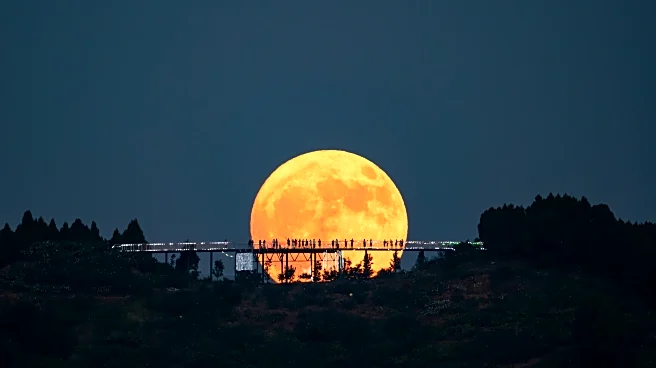What's Happening?
The Beaver Moon, the closest supermoon of 2025, is set to brighten the skies this week. This astronomical event occurs when the full moon is at its closest point to Earth, known as perigee, making it appear
larger and brighter than usual. The Beaver Moon will reach its peak fullness at 8:20 a.m. EST on November 5th, with the best viewing time in North America being at dusk on November 6th. This supermoon is part of a series of four occurring from early fall into 2026, with the Beaver Moon being the largest and brightest of the year.
Why It's Important?
Supermoons are significant as they offer a spectacular visual experience and highlight the moon's influence on Earth. The gravitational pull during a supermoon can lead to slightly higher tides, although the difference is minimal. This event also serves as a reminder of the moon's role in shaping Earth's natural rhythms, such as tides and seasonal cycles. For many, the Beaver Moon is a cultural marker, traditionally associated with the time when beavers prepare for winter, reflecting the deep connection between natural events and human activities.
What's Next?
Following the Beaver Moon, sky watchers can look forward to the next supermoon, the Cold Moon, in December, which will be the second-largest of the year. The sequence of supermoons will pause until December 2026, when the Christmas supermoon occurs. These events continue to provide opportunities for public engagement with astronomy and for scientists to study the moon's effects on Earth.












